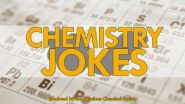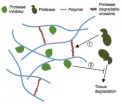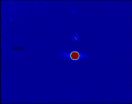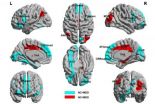(Press-News.org) (PHILADELPHIA) – A derivative of vitamin A, known as retinoic acid, found abundantly in sweet potato and carrots, helps turn pre-cancer cells back to normal healthy breast cells, according to research published this month in the International Journal of Oncology. The research could help explain why some clinical studies have been unable to see a benefit of vitamin A on cancer: the vitamin doesn't appear to change the course of full-blown cancer, only pre-cancerous cells, and only works at a very narrow dose.
Because cells undergo many changes before they become fully aggressive and metastatic, Sandra V. Fernandez, Ph.D., Assistant Research Professor of Medical Oncology at Thomas Jefferson University, and colleagues, used a model of breast cancer progression composed of four types of cells each one representing a different stage of breast cancer: normal, pre-cancerous, cancerous and a fully aggressive model.
When the researchers exposed the four breast cell types to different concentrations of retinoic acid – one of the chemicals that the body converts vitamin A into – they noticed a strong change in the pre-cancerous cells. Not only did the pre-cancerous cells begin to look more like normal cells in terms of their shape, they also changed their genetic signature back to normal. Dr. Fernandez's pre-cancerous cells had 443 genes that were either up or downregulated on their way to becoming cancerous. All of these genes returned to normal levels after treatment with retinoic acid. "It looks like retinoic acid exerts effects on cancer cells in part via the modulation of the epigenome," says Fernandez.
"We were able to see this effect of retinoic acid because we were looking at four distinct stages of breast cancer," says Dr. Fernandez. "It will be interesting to see if these results can be applied to patients."
Interestingly, the cells that were considered fully cancerous did not respond at all to retinoic acid, suggesting that there may be a small window of opportunity for retinoic acid to be helpful in preventing cancer progression. In addition, the researchers showed that only one concentration of retinoic acid (about one micro Molar) produced the anti-cancer effects. Lower concentrations gave no change, and higher concentrations produced a smaller effect.
The next step will be to try to learn whether the amount of retinoic acid required can be maintained in an animal model, and if that concentration will have the same effects as Dr. Fernandez observed in cells. If those studies show the same effect, the next step would be to test whether these observations hold true in humans.
INFORMATION:
The research was funded by grants from Friends for an Earlier Breast Cancer Test and the Pennsylvania Breast Cancer Coalition.
The authors report no conflicts of interest
For more information, contact Edyta Zielinska, 215-955-5291, edyta.zielinska@jefferson.edu.
About Jefferson
Thomas Jefferson University (TJU), the largest freestanding academic medical center in Philadelphia, is nationally renowned for medical and health sciences education and innovative research. Founded in 1824, TJU includes Jefferson Medical College (JMC), one of the largest private medical schools in the country and ranked among the nation's best medical schools by U.S. News & World Report, and the Jefferson Schools of Nursing, Pharmacy, Health Professions, Population Health and the Graduate School of Biomedical Sciences. Jefferson University Physicians is TJU's multi-specialty physician practice consisting of the full-time faculty of JMC. Thomas Jefferson University partners with its clinical affiliate, Thomas Jefferson University Hospitals.
Paper Reference: M.F. Arisi, et al, "All trans-retinoic acid (ATRA) induces re-differentiation of early transformed breast epithelial cells," International Journal of Oncology, DOI: 10.3892/ijo.2014.2354, 2014.
Can vitamin A turn back the clock on breast cancer?
Pre-cancerous cells treated with a vitamin A derivative revert into non-cancerous cells
2014-03-31
ELSE PRESS RELEASES FROM THIS DATE:
Excessive hospital occupancy levels result in avoidable mortality
2014-03-31
Once a hospital reaches a certain occupancy level, the quality of care it provides deteriorates, increasing the risk of mortality of critically ill patients. What is worrying is that this safety 'tipping point' is reached at occupancy levels that are below 100%. The findings are reported by a team of researchers led by Ludwig Kuntz, Professor of Health Management at the University of Cologne. Their paper (Stress on the Ward: Evidence of Safety Tipping Points in Hospitals) is to appear shortly in the international journal Management Science.
For the purposes of their study, ...
Anesthetic technique important to prevent damage to brain
2014-03-31
Researchers at the University of Adelaide have discovered that a commonly used anesthetic technique to reduce the blood pressure of patients undergoing surgery could increase the risk of starving the brain of oxygen.
Reducing blood pressure is important in a wide range of surgeries – such as sinus, shoulder, back and brain operations – and is especially useful for improving visibility for surgeons, by helping to remove excess blood from the site being operated on.
There are many different techniques used to lower patients' blood pressure for surgery – one of them is ...
Minneapolis Cardiology Fellow named an ACCF Young Investigators Awards finalist
2014-03-31
MINNEAPOLIS, MN – March 31, 2014 – Minneapolis Heart Institute Chief Cardiology Fellow Ankur Kalra, MD has been named as a finalist for the 2014 ACCF Young Investigators Awards. Kalra's research, funded by the Minneapolis Heart Institute Foundation (MHIF), supports the ongoing quest to better identify, with noninvasive tools, which heart attack survivors are at greatest risk for sudden cardiac death, and therefore may benefit from ICD (implantable cardioverter defibrillator) therapy. Kalra will present his research at the American College of Cardiology (ACC) meeting in ...
Can gratitude reduce costly impatience?
2014-03-31
The human mind tends to devalue future rewards compared to immediate ones – a phenomenon that often leads to favoring immediate gratification over long-term wellbeing. As a consequence, patience has long been recognized to be a virtue. And indeed, the inability to resist temptation underlies a host of problems ranging from credit card debt and inadequate savings to unhealthy eating and drug addiction.
The prevailing view for reducing costly impatience has emphasized the use of willpower. Emotions were to be tamped down in order to avoid irrational impulses for immediate ...
Periodic puns: Chemistry jokes just in time for April Fools' Day (video)
2014-03-31
WASHINGTON, March 31, 2014 — It's almost April Fools' Day, and the American Chemical Society's (ACS') Reactions video series is celebrating with an episode featuring our favorite chemistry jokes. Which two elements look cute together? Why is father water concerned about his "iced out" son? What do you get when you combine sulfur, tungsten and silver? Get all the punchlines in the latest Reactions episode, available at: http://youtu.be/C5RZRkhk0OM.
Subscribe to the series at Reactions YouTube, and follow us on Twitter @ACSreactions.
INFORMATION:
The American Chemical ...
New Penn-designed gel allows for targeted therapy after heart attack
2014-03-31
Combatting the tissue degrading enzymes that cause lasting damage following a heart attack is tricky. Each patient responds to a heart attack differently and damage can vary from one part of the heart muscle to another, but existing treatments can't be fine-tuned to deal with this variation.
University of Pennsylvania researchers have developed a way to address this problem via a material that can be applied directly to the damaged heart tissue. The potentially dangerous enzymes break down this gel-like material, releasing enzyme inhibitors contained within. This responsive, ...
New Zealand physicists split and collide ultracold atom clouds
2014-03-31
VIDEO:
Physicists from New Zealands' University of Otago have pushed the frontiers of quantum technology by developing a steerable 'optical tweezers' unit that uses intense laser beams to precisely split minute...
Click here for more information.
Physicists at New Zealand's University of Otago have pushed the frontiers of quantum technology by developing a steerable 'optical tweezers' unit that uses intense laser beams to precisely split minute clouds of ultracold atoms and to ...
Childhood virus may increase type 1 diabetes risk
2014-03-31
The study, published today in PLOS Pathogens, explored the ways the rotavirus infection contributes to autoimmune disease in mice, and researchers believe the breakthrough could be relevant to human infection with rotavirus.
The research found that it may be the "bystander effect" that causes the rotavirus infection to accelerate the onset of type 1 diabetes.
The "bystander effect" suggests that the virus provokes a strong activation of the immune system, which then spills over, allowing the immune system to attack not only the viral intruder but some of the body's ...
Role of type-2 astrocytes on the repair of spinal cord injury
2014-03-31
Increasing expression of bone morphogenetic proteins at the lesion site of the central nervous system possibly induces oligodendrocyte precursor cells to differentiate into type-2 astrocytes. While the restriction of oligodendrocyte differentiation could affect remyelination, it remains poorly understood how type-2 astrocytes regulate regeneration and functional recovery. Thus, examining the effects of type-2 astrocytes on neuronal growth is helpful in understanding the possible influential factors of oligodendrocyte precursor cells on axonal regeneration and remyelination, ...
Resting-state functional connectivity as an auxillary diagnosis of depression
2014-03-31
According to a paper published in the Neural Regeneration Research (Vol. 9, No. 2, 2014), both depressive patients and healthy controls presented typical small-world attributes, and compared with healthy controls, characteristic path length was significantly shorter in depressive patients, suggesting development toward randomization. Patients with depression showed apparently abnormal node attributes at key areas in cortical-striatal-pallidal-thalamic circuits. In addition, right hippocampus and right thalamus were closely linked with the severity of depression. An artificial ...
LAST 30 PRESS RELEASES:
University of Phoenix College of Doctoral Studies releases white paper on AI-driven skilling to reduce burnout and restore worker autonomy
AIs fail at the game of visual “telephone”
The levers for a sustainable food system
Potential changes in US homelessness by ending federal support for housing first programs
Vulnerability of large language models to prompt injection when providing medical advice
Researchers develop new system for high-energy-density, long-life, multi-electron transfer bromine-based flow batteries
Ending federal support for housing first programs could increase U.S. homelessness by 5% in one year, new JAMA study finds
New research uncovers molecular ‘safety switch’ shielding cancers from immune attack
Bacteria resisting viral infection can still sink carbon to ocean floor
Younger biological age may increase depression risk in older women during COVID-19
Bharat Innovates 2026 National Basecamp Showcases India’s Most Promising Deep-Tech Ventures
Here’s what determines whether your income level rises or falls
SCIE indexation achievement: Celebrate with Space: Science & Technology
Children’s Hospital Colorado performs region’s first pediatric heart and liver dual organ transplant
Australian team discover why quantum computers have memory problems over time
What determines the fate of a T cell?
Candida auris: genetic process revealed which could be treatment target for deadly fungal disease
Groundbreaking discovery turns household plastic recycling into anti-cancer medication
Blocking a key inflammatory pathway improves liver structure and vascular function in cirrhosis, study finds
Continuous spread: Raccoon roundworm detected in nine European countries
HKUST Engineering researchers developed a novel photodetector to enhance the performance of on-chip light monitoring
Strategic river sensors could have forewarned of Texas Camp flood disaster
Drone sampling of whale breath reveals first evidence of potentially deadly virus in Arctic
Roman soldiers defending Hadrian’s Wall infected by parasites, study finds
Pinochet’s prisoners were tormented with music but still found solace in it, a new book reveals
Fertility remains high in rural Tanzania despite access to family planning
AI-assisted device can improve autism care access
Kinetic careers
Uncovering how parasitic plants avoid attacking themselves to improve crop resistance
Nanoparticle vaccine strategy could protect against Ebola and other deadly filoviruses
[Press-News.org] Can vitamin A turn back the clock on breast cancer?Pre-cancerous cells treated with a vitamin A derivative revert into non-cancerous cells




